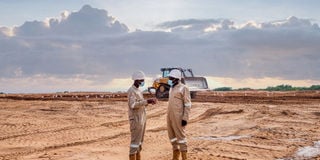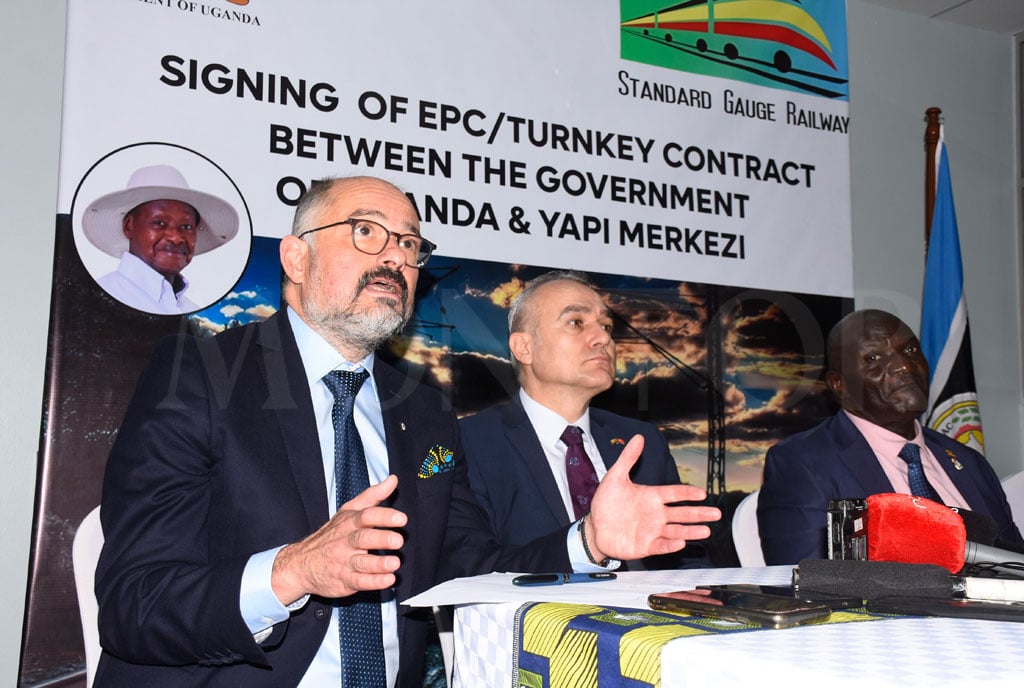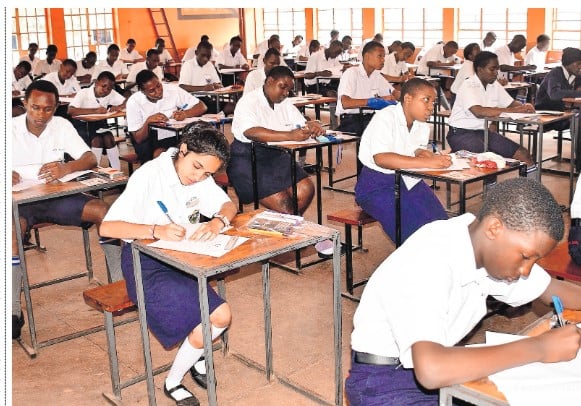Ugandans take charge of oil, gas operations

Engineers at Tilenga oilfield. Oil and gas projects are racing against time to beat the 2025 target for first oil. PHOTO/FILE
What you need to know:
The oil sector directly employs 14,451 people, of whom 13,048 are Ugandans which represents 90 percent. This comes at a time the oil projects are racing against time to beat the 2026 target for first oil.
Since the discovery of commercial oil and gas deposits was made in 2006, Ugandans took up oil and gas training both abroad and later locally in anticipation of running the sector when the oil starts flowing.
Delays in signing the Final Investment Decision (FDI) which was to set the ball rolling in the sector saw the majority of the trainees taken up by other sectors such as manufacturing while others sought green pastures in countries with active oil mining and production.
The FDI finally came in 2022. The question then was: Were Ugandans ready to run the sector?
Recently, Energy Minister Ruth Nankabirwa in her half-year report noted, “The sector directly employed fourteen thousand, four hundred fifty-one (14,451) people, of whom thirteen thousand forty-eight (13,048) are Ugandans which represents 90 percent.”
The licensees directly employed 1,403 people, of whom 67 percent are Ugandans. The Licensee’s contractors and their sub-contractors employed 13,399 of whom 92 percent are Ugandans. The companies sourced 4,483 employees from the local communities.
The Government is enhancing the country’s current petroleum resources, which stand at 6.5 billion barrels (with 1.5 billion recoverable) according to the Energy Ministry.
Training capacity
The increased number of Ugandans in the sector can be attributed to the development in local training capacity which has grown from the core universities to vocational institutions and training centers.
Currently, the Oil and gas Trainers Association which brings together institutions that train in oil and gas boasts of 22 members including training centres and vocational institutes.
Linda Nalubanga, a senior national content officer said, “Over the years, we have seen an increase in the number of accredited institutions offering oil and gas courses. Outof the 22 institutions in the oil and gas trainers association, 15 are accredited by different international bodies.”
Certification does not stop at accrediting institutions; the courses offered too must meet international standards which has been a tall order for these institutions. This ranges from the cost of certification to getting certified trainers.
“We acknowledge that there may be some gaps, but training in oil and gas is a joint effort between public and private institutions,” said Nalubanga.
On top of certification, the industry has to catch up in changing technologies. Nalubanga observed, “We have noticed that most of the work is being automated in the industry which dawns on us to change our training programmes.”
Uganda’s petroleum journey cannot be complete without mentioning Uganda Petroleum Institute Kigumba.
Journey to Petroleum Institute
Started in 2009 as a presidential initiative to support the training of the oil and gas sector, the institute is the country’s only oil and gas specialised training centre for oil and gas.
Since Uganda’s oil and gas industry is in its nascent years, UPIK relies more on partnerships with licensees such as Total Energies and CNOOC to design its curriculum.
Oscar Muhumuza, a lecturer at UPIK contends that, through the partnership with Total Energies, the Institute is supported by experienced instructors and learning equipment which would otherwise be out of reach.
UPIK partnership with Total Energies is grounded in the Tilega project academy where Total identifies students and sends them for training.
The two-year programme involves both theory and hands-on training in the Tilenga and Kingfisher projects area, while some are taken across the globe in Total project areas.
The academy received its International Organisation for Standardisation (ISO) certification which set it as an international standard.
For Total Energies, the brain behind the Tilenga Academy, the aim is to train Ugandans who can become self-employed or be taken up by other sectors. So far, more than 15,000 are internationally certified people and eligible to work in the oil industry both here and abroad.

An oil rig in Buliisa District. Uganda's oil production could stretch into 2027. PHOTO/FILE
“When it comes to building infrastructure that is required to develop our resources as Uganda, there are certain standards that have been set and we have to follow,” said Anita Kayongo the corporate affairs manager at Total Energies.
UPIK churns out to 30 students each year for both upstream and downstream programs. But for diplomas, an estimated120 students graduate through the programme. However, for international certifications they are offered on demand.
Muhumuza also notes, “The uptake of our students is tremendous because of the five months of field training they have with exploration companies.”
He adds that the absorption rate stands at 70 percent in the oil and gas industry while the rest are taken to by other industries, for example, sugar mills and electricity distribution among others.
Labour demands
Currently, the countdown has begun for the anticipated first flow of commercial oil in 2026.
This means there is a hive of activities happening in the Albertine Graben. That is the development of rigs and the central processing area.
On the other hand, construction of the 1443-kilometre East African Crude Oil Pipeline (EACOP) which will transport Uganda’s oil to the port of Tanga in Tanzania is underway.
Nalubanga notes, “Currently, we have a high demand for welders to work on the pipeline as well as the Tilenga and Kingfisher feeder pipelines. The others are side boom operators who go hand in hand with the pipeline operations.
She adds that we are also developing a pool of field operators who will be charged with running things once the oil starts flowing.
There is a high demand for semi-skilled workers compared to the skilled ones.
However, there is a shift. Most technical roles that were run by expatriates are now being taken up by Ugandans - save for some roles like engineering and production management.




